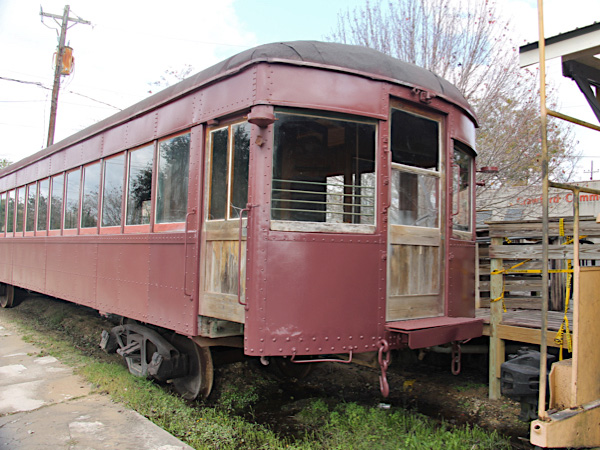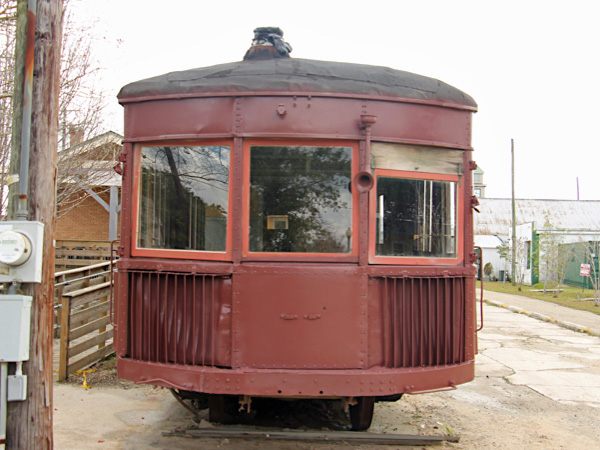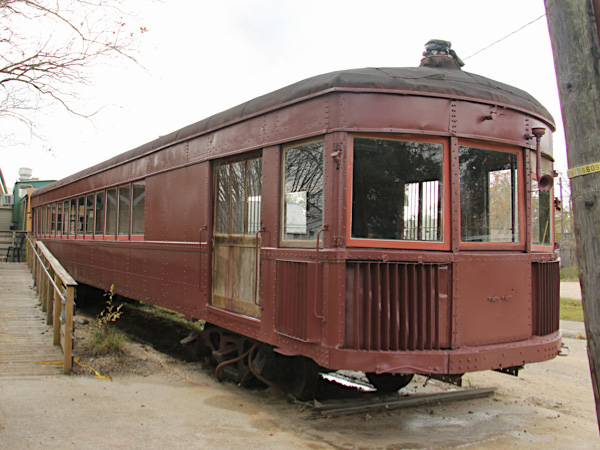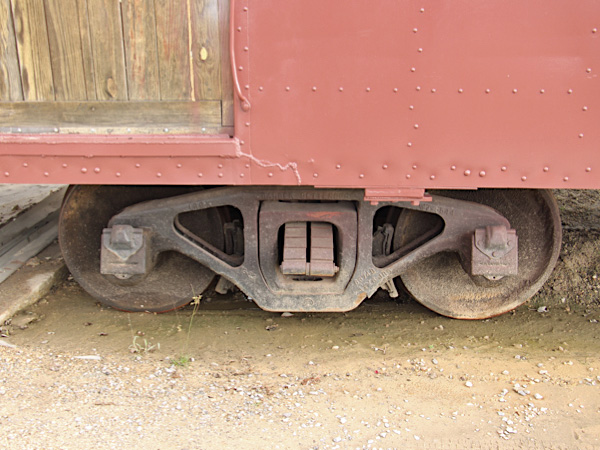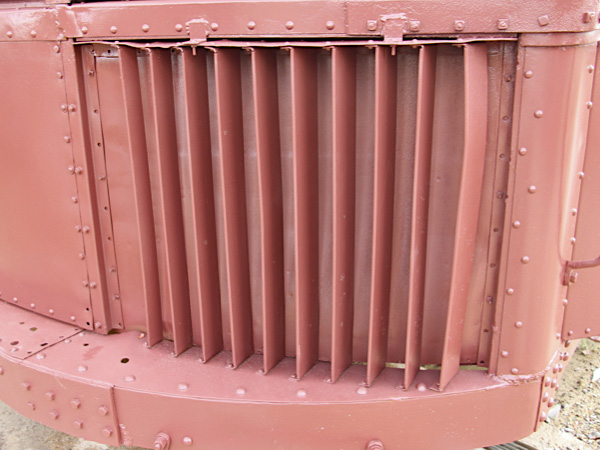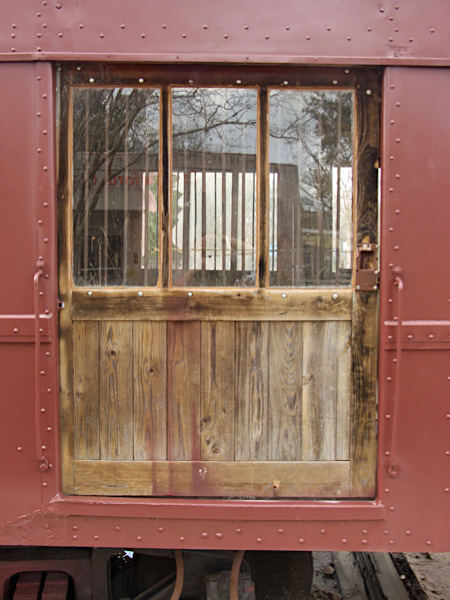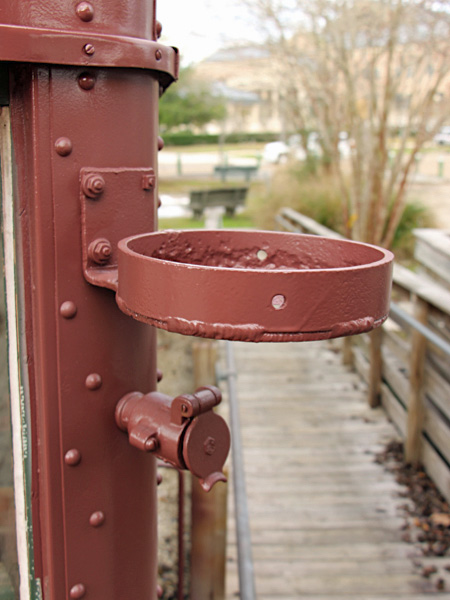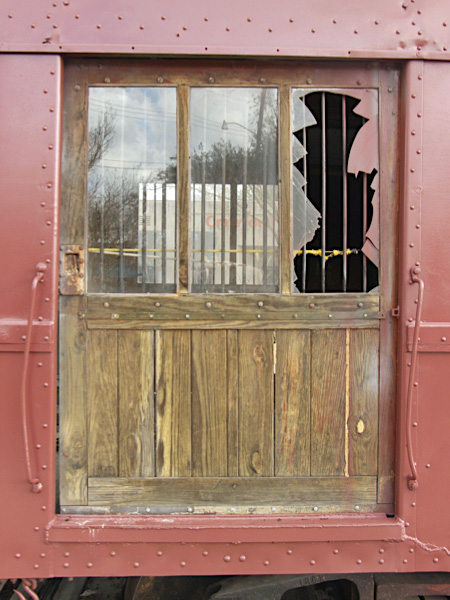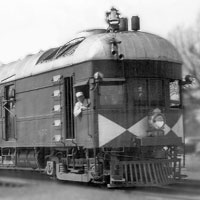 |
Columbus & Greenville Railway Gas-electric Motorcars |
The original Columbus & Greenville owned and operated three passenger motorcars, or "Doodlebugs," all built by the J. G. Brill Company of Philadelphia. Car M-75 was purchased in 1925 and was a gas-mechanical railcar, used in local service between Winona and Greenville. The car was a success, but was retired only five years later with the arrival of two newer and heavier motorcar-trailer sets. Cars M-76 and M-77 arrived from Brill in late 1928 and were constructed as gas-electric cars. Together with their unpowered trailers, both sets operated on the Delta Route until 1948. The cars provided a comfortable ride for Mississippi patrons and a large savings for the railroad, when compared to the higher costs of operating steam locomotives. In their later years of service, it was not uncommon for a motorcar-trailer combination to be hauled by a steamer when mechanical issues developed on the Brill power unit. Car M-76 was sold for scrap in the early 1950s, while M-77 was sold for use as an office by a local riding club in the Columbus area. Car M-75 was sold to the Louisiana & Northwest Railroad in 1931 and today survives as patron seating at a restaurant in Covington, Louisiana.



example Brill motorcar plans / drawn by A. E. Baker / collection
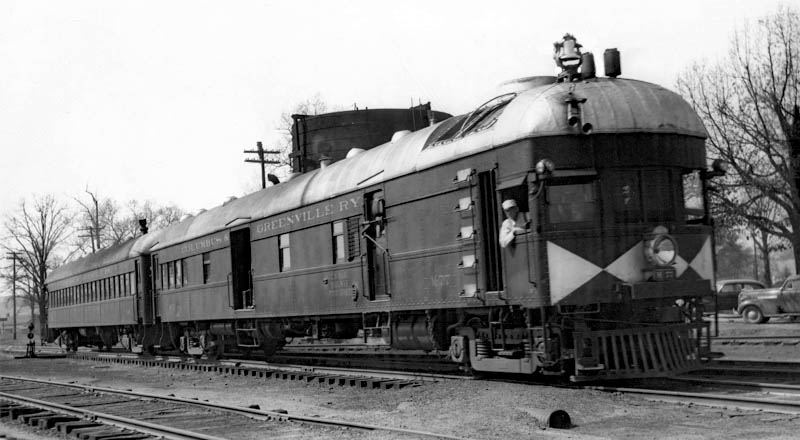
Columbus & Greenville #M-77
Columbus, Ms / Mar 1944 / collection


Columbus & Greenville #M-77
to Columbus & Greenville, Dec 1928
retired from service, 1948
carbody sold to private owner, 1952

Columbus & Greenville #T-86
Columbus, Ms / Mar 1944 / collection


Columbus & Greenville #T-86
built as trailer for M-76
converted to MoW boarding car, 1948
scrapped, 1972
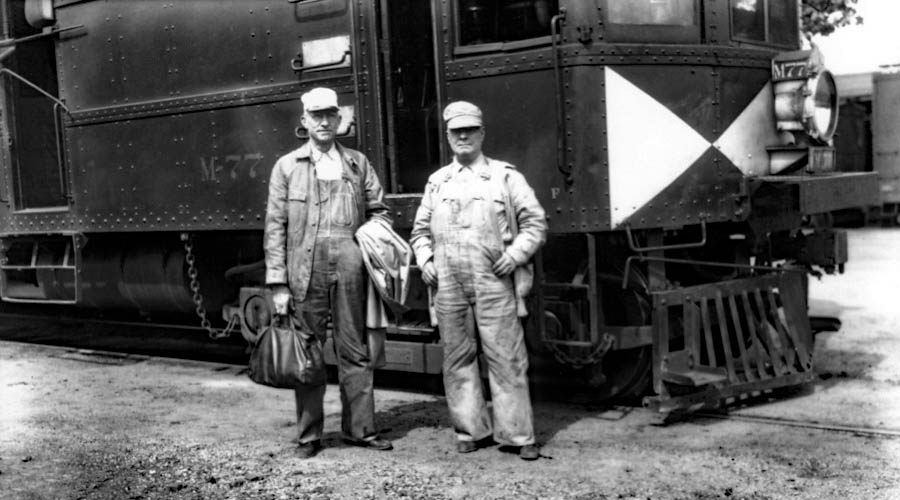
Columbus, Ms / Mar 1944 / collection

See also our C. W. Witbeck scrapbook for more of his March 1944 Delta Route images
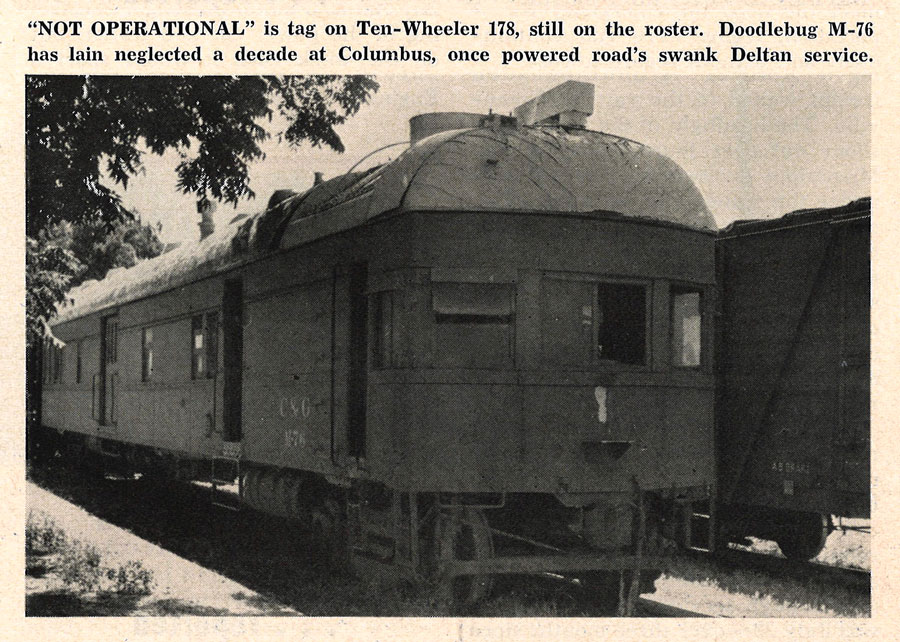
from TRAINS Magazine
- Sep 1958 / collection
In December of 1972, John photographed the remains of motorcar M-77 near Columbus. His field notes are shown below. The M-77 body was purchased as scrap for use as storage for the Bluecutt Riding Club.

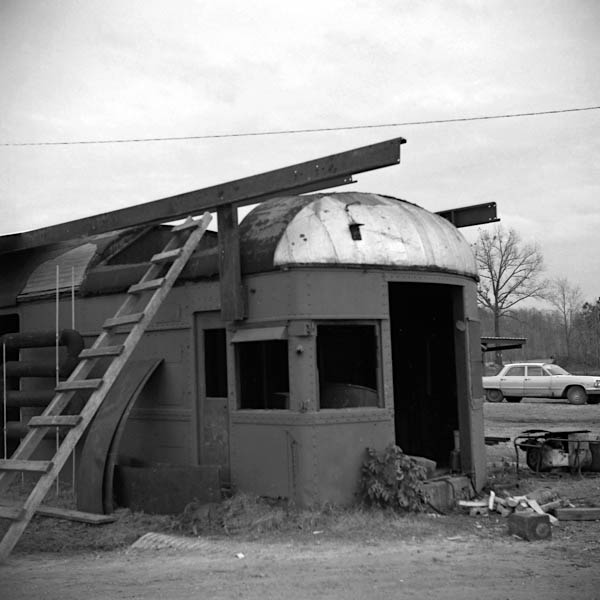
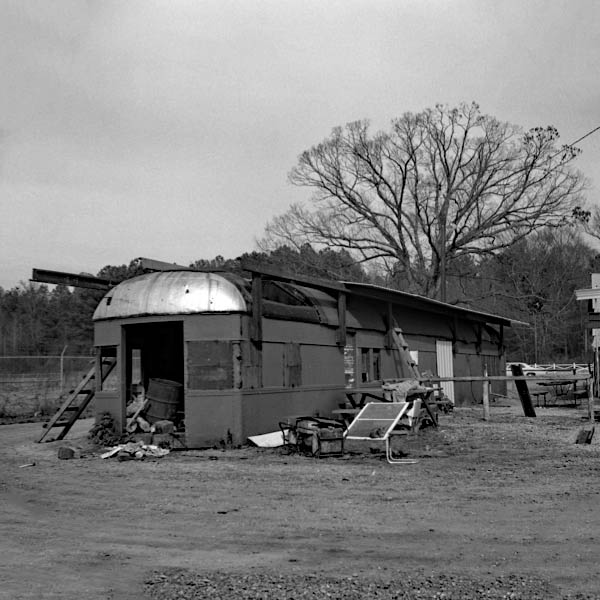
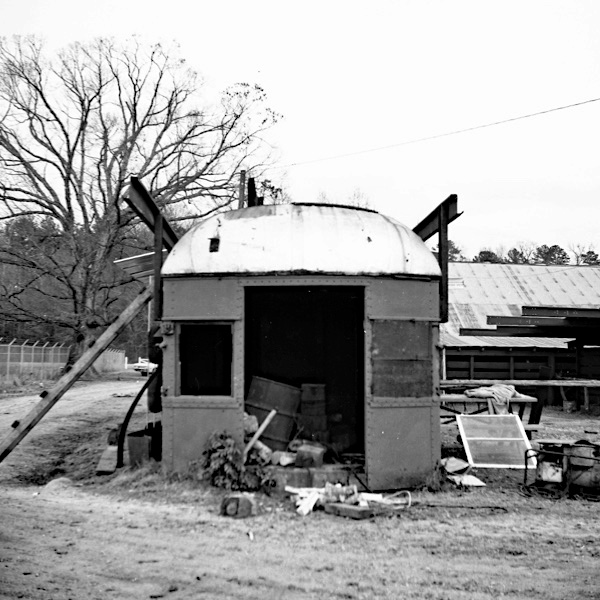
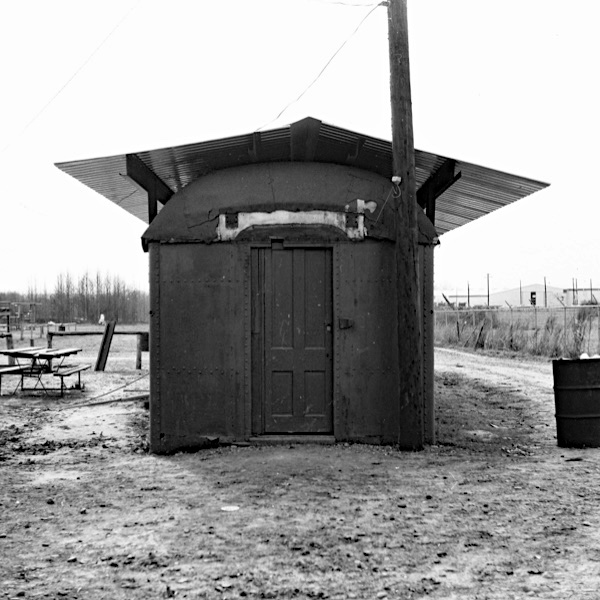

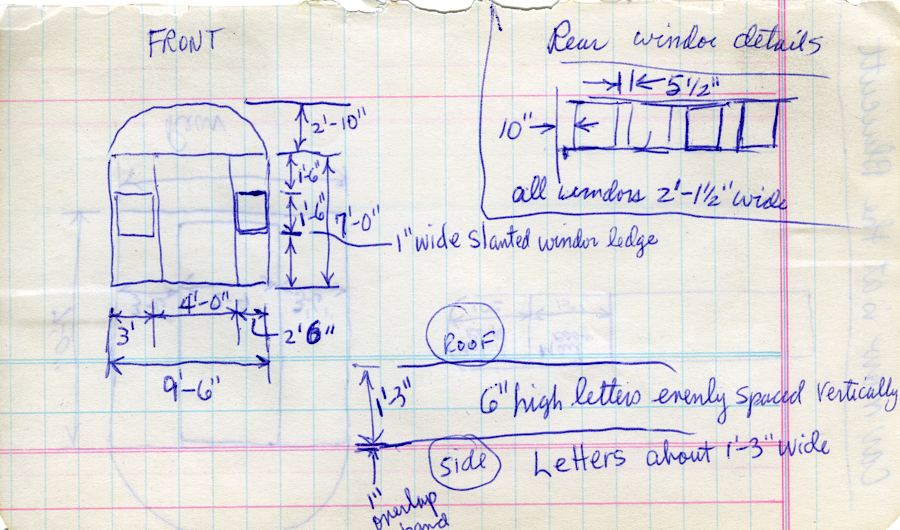
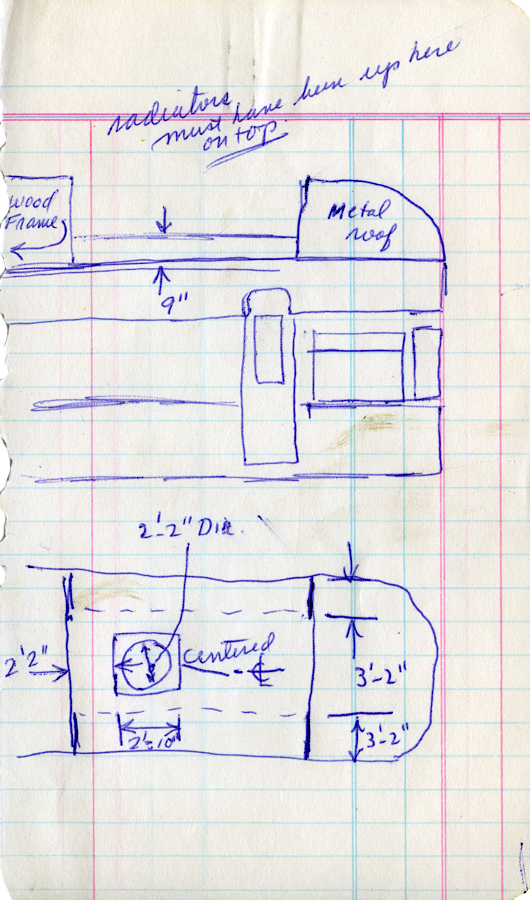
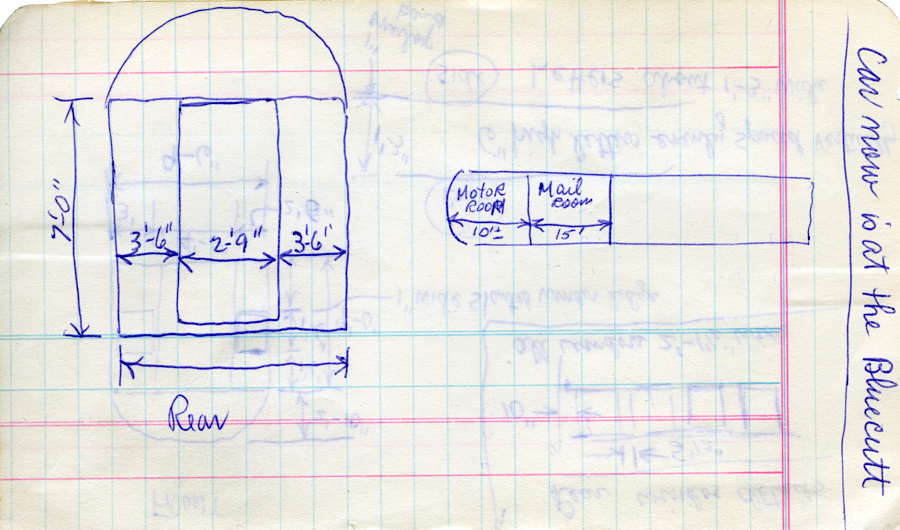
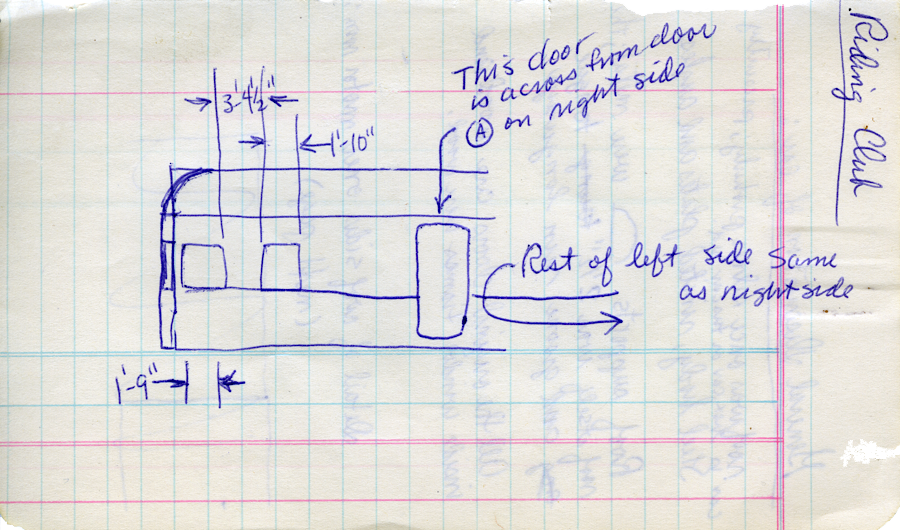
all photos and field notes above made at Columbus, Ms / Dec 1972 / JCH
 Bob Gray's motorcar
Bob Gray's motorcar

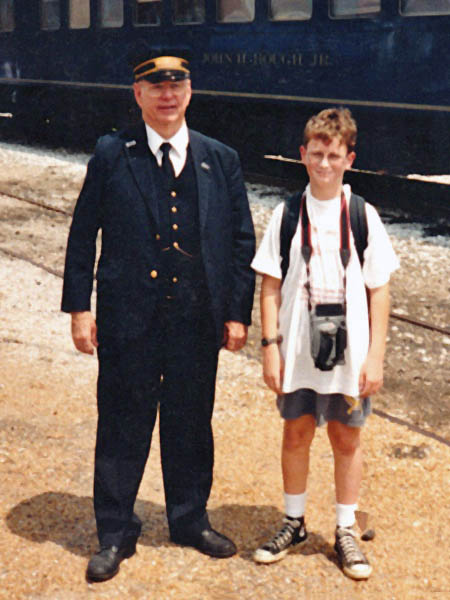 One of the last living employees of the original Columbus & Greenville was veteran conductor Bob Gray, who died at the age of 90 in 2019. We first met Bob during the 1989 NRHS excursion, for which he served as conductor ... in full dress. He's pictured here in 1998 in Columbus with my nephew Andrew Ross. Bob loved all things Columbus & Greenville, so much so that he built a scale-riding replica of motorcar M-77 and trailer T-87. HawkinsRails thanks fellow CAGY fans Terry Shirley and Shane Murphy for their pictures of Bob's set operating on the Annetta Valley & Western scale-riding railroad in north Texas. As to the construction of the motorcar set, Terry notes:
One of the last living employees of the original Columbus & Greenville was veteran conductor Bob Gray, who died at the age of 90 in 2019. We first met Bob during the 1989 NRHS excursion, for which he served as conductor ... in full dress. He's pictured here in 1998 in Columbus with my nephew Andrew Ross. Bob loved all things Columbus & Greenville, so much so that he built a scale-riding replica of motorcar M-77 and trailer T-87. HawkinsRails thanks fellow CAGY fans Terry Shirley and Shane Murphy for their pictures of Bob's set operating on the Annetta Valley & Western scale-riding railroad in north Texas. As to the construction of the motorcar set, Terry notes:
The cars were totally scratch-built. Bob told me how he and his wife, Louise, went out to the riding club where the carbody was being used as a building, and they spent several days photographing and measuring it thoroughly. He even managed to gather a few parts off of it. He also said that the curved roof sections of the motorcar and the coach were actually rolled with the machinery down in the C&G shops in Columbus.
And about the photos below, Terry writes:
In October of 2020 we ran the late Bob Gray’s M-77 and Coach on the Annetta Valley & Western track here in North Texas. This was Bob’s favorite track to run his equipment on, and we probably put more miles on it that day than Bob did when he ran it himself. Thanks to Shane Murphy, who took the [action] shot, and is the M-77’s owner now.

Oct 2020 / Terry Shirley

Oct 2020 / Terry Shirley
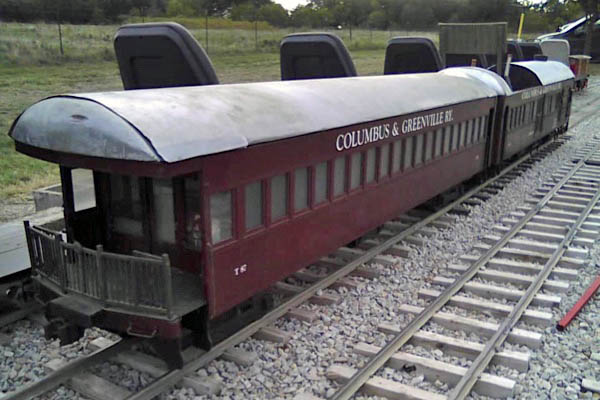
Oct 2020 / Terry Shirley
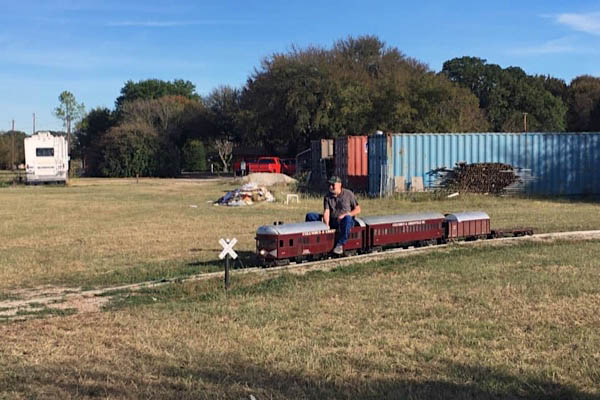
Oct 2020 / Shane Murphy
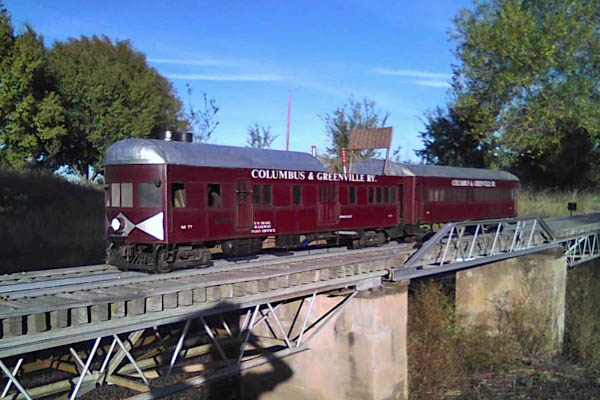
Oct 2020 / Terry Shirley
HawkinsRails thanks Terry Shirley for the photos above and Chris Martin for the photo below

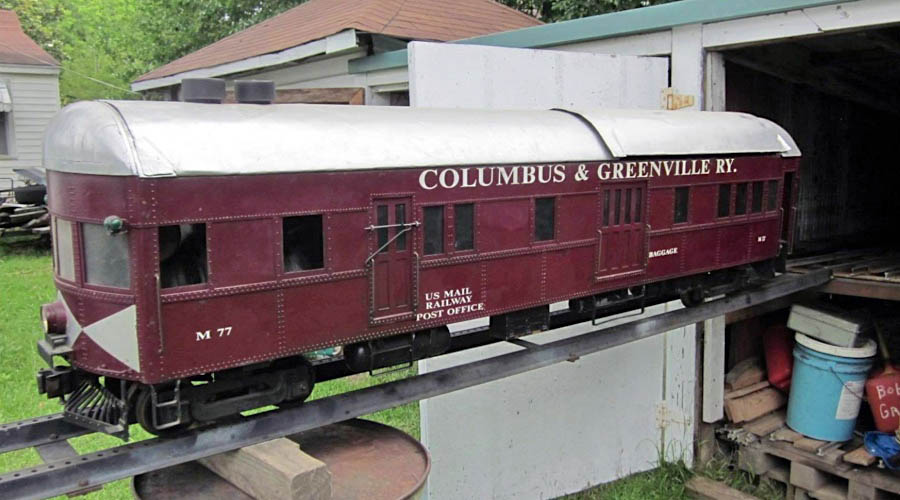
Columbus, Ms / Sep 2018 / Chris Martin

Its daily passenger train, The Deltan, was intended by God and the management to be run as a two-car Diesel-electric unit, but whenever its motors are out of whack, which, after a few years, became an almost constant circumstance, the two cars were of necessity combined in the consist of the daily mixed train east and west. The mail and express compartments are in the same unit with the power installation so that the whole weird contrivance is usually attached where the caboose would be on a more conventional freight.
Lucius Beebe and Charles Clegg — Mixed Train Daily — 1961
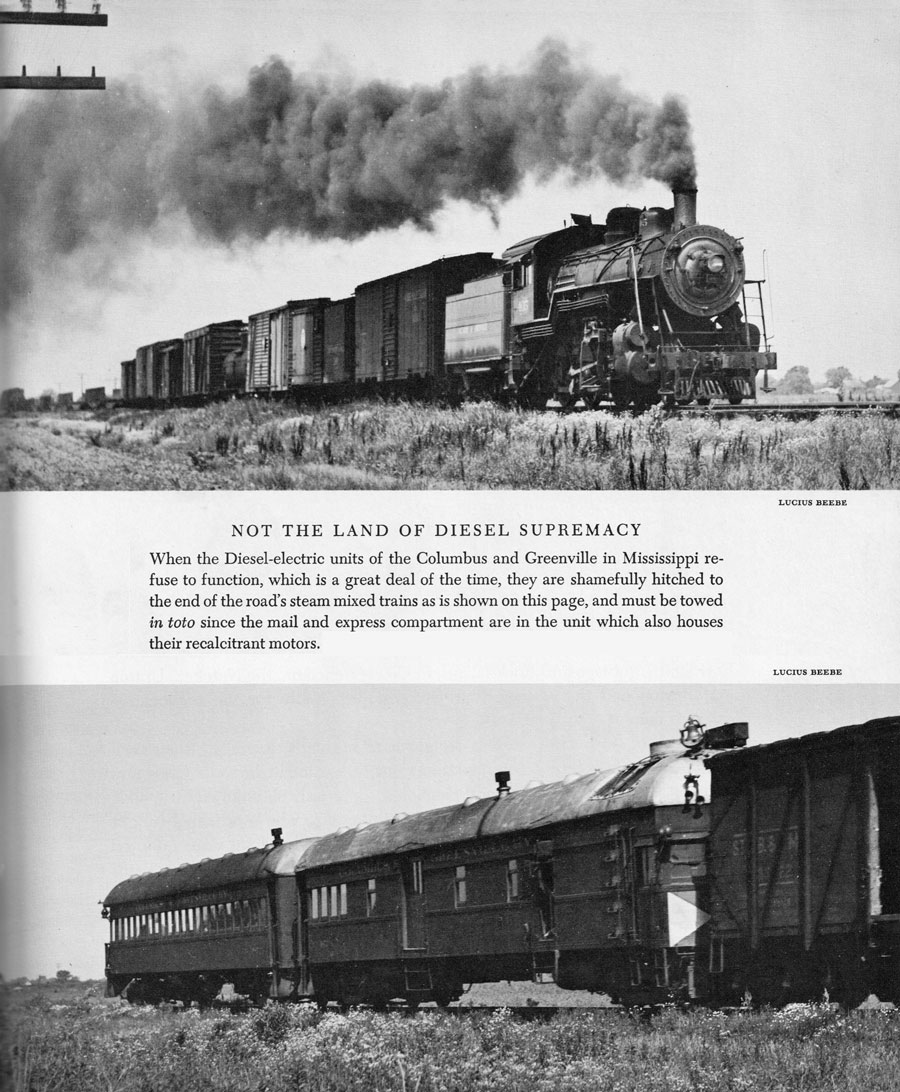
from Mixed Train Daily
— Lucius Beebe & Charles Clegg / collection
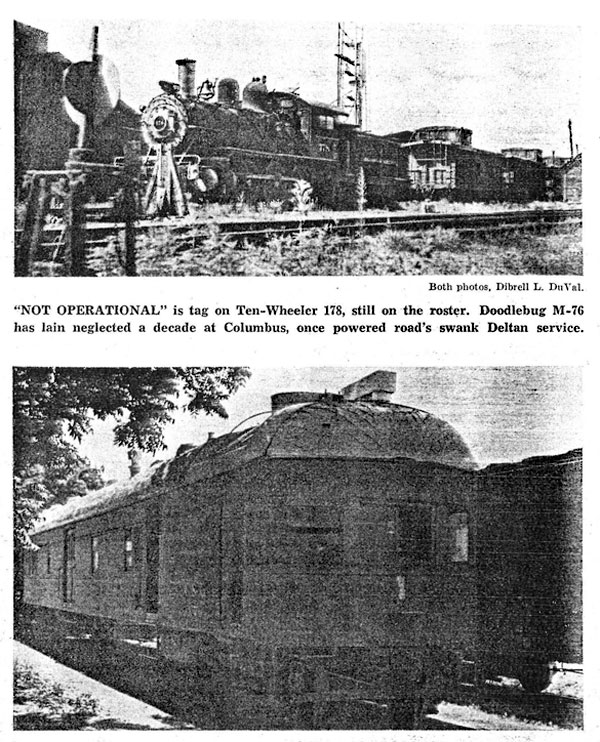
from TRAINS
magazine - Sep 1958 / collection
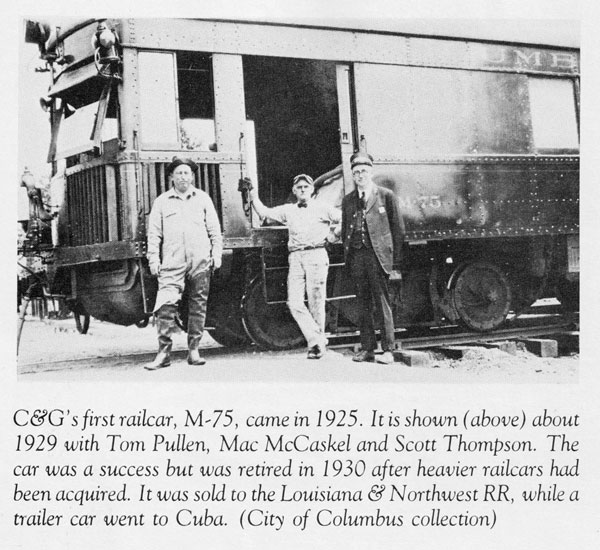
from The Delta Route: A History of the C&G Railway
/ collection
 Columbus & Greenville #M-75
Columbus & Greenville #M-75

I received the following surprising correspondance from Louis Saillard:
Ralph: The attached photo (sent by the editor of the Covington newspaper) shows Louisiana & North West "Doodlebug" M-300 being unloaded behind the depot at Covington, La. Even more interesting is that this is the ex-Columbus & Greenville M-75, nee-Brill demonstrator. The folks who own the Covington depot bought it to display there. I was in Covington last week, when it was scheduled to arrive, but it didn't. I'll be there again soon to shoot a piece of C&G equipment I've never seen. I'm confident that your Dad would approve. Hope all is well with you and yours. Best wishes, Louis

 UNCOMMON or UNUSUAL equipment
UNCOMMON or UNUSUAL equipment

Columbus & Greenville M-75
Covington, La / May 2016 / John Walker


Columbus & Greenville M-75
blt as Brill motorcar demonstrator
to Columbus & Greenville, 1925
to Louisiana & North West, 1930
retired in 1948, to private ownership
to LOLA Restaurant, Covington, La

Built by the Brill Company as a demonstrator in 1925 as M-75 (Brill #22323) and displayed at the 1926 Chicago's Worlds Fair. Sold in 1925 to the Columbus & Greenville Railroad. Retired by the C&G in 1930 and sold to the Louisiana & Northwest Railroad, who renumbered the car M-300. L&NW retired the car in 1948 and sold it into private ownership. The car no longer has an engine or the correct trucks but the car body is in very good condition and basically original. In the last several years the car has received a new roof, new floor and new windows. It was originally equipped with two segregates coach sections and a baggage/Railway Post Office. M-300 was powered by a 175 HP power truck gas engine and had a small engineers compartment at the front of the car. This is a very RARE and unique car that is steeped in history. Would make a great addition to any museum or collection.
Ozark Mountain Railcar listing, spring 2016

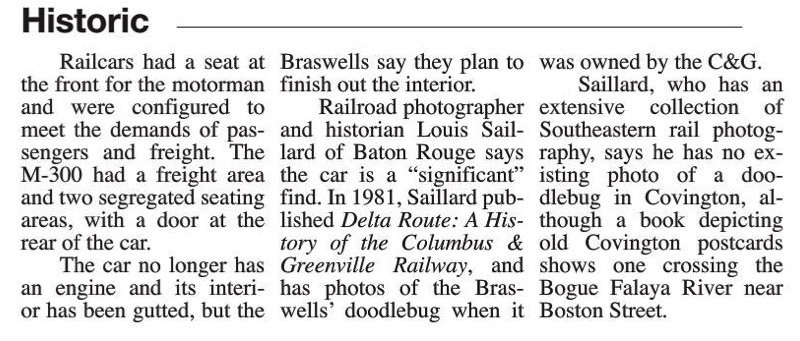
from St. Tammany Farmer
- May 2016 / collection

 The J. G. Brill Company took the four-cylinder Model 55 a little further when it introduced the Model 65 [motorcar] in 1924. It was the same in all respects, except with a slightly larger engine room to accommodate a more powerful six-cylinder engine. The purpose of the additional power was to enable the car to pull a trailer. The Model 65 was never even remotely popular, however, as according to Brill order books only fifteen were ever built, ten of which went in one order to the New York, New Haven & Hartford Railroad. Instead, Brill's railroad customers preferred the smaller Model 55 or the combination of greater capacity and greater power provided by the Model 75. The Model 75 was fifty-five feet long, with a six-cylinder 175 horsepower engine that allowed the car to travel a maximum speed of sixty miles per hour. It had a larger baggage compartment than the Model 55, with a standard seating capacity of fifty-eight, or twenty more passengers than the smaller car carried.
The J. G. Brill Company took the four-cylinder Model 55 a little further when it introduced the Model 65 [motorcar] in 1924. It was the same in all respects, except with a slightly larger engine room to accommodate a more powerful six-cylinder engine. The purpose of the additional power was to enable the car to pull a trailer. The Model 65 was never even remotely popular, however, as according to Brill order books only fifteen were ever built, ten of which went in one order to the New York, New Haven & Hartford Railroad. Instead, Brill's railroad customers preferred the smaller Model 55 or the combination of greater capacity and greater power provided by the Model 75. The Model 75 was fifty-five feet long, with a six-cylinder 175 horsepower engine that allowed the car to travel a maximum speed of sixty miles per hour. It had a larger baggage compartment than the Model 55, with a standard seating capacity of fifty-eight, or twenty more passengers than the smaller car carried.
The first Model 75 sold went to the Louisiana & North West Railroad in late 1924. Delivered under its own power, the car ran 1,006 miles from the Philadelphia plant to St. Louis (via Baltimore) over the Baltimore & Ohio Railroad in thirty hours. Sixty-nine Model 75s were built for domestic use, with almost all orders placed for one at a time. The most notable exception to this trend occurred in relation to the South Australian Railways (SAR), the largest single purchaser of Model 75s, which bought sixty-one of them to run on various broad and narrow gauge lines in the state of South Australia.
Debra Brill — History of the J.G. Brill Company — 2001
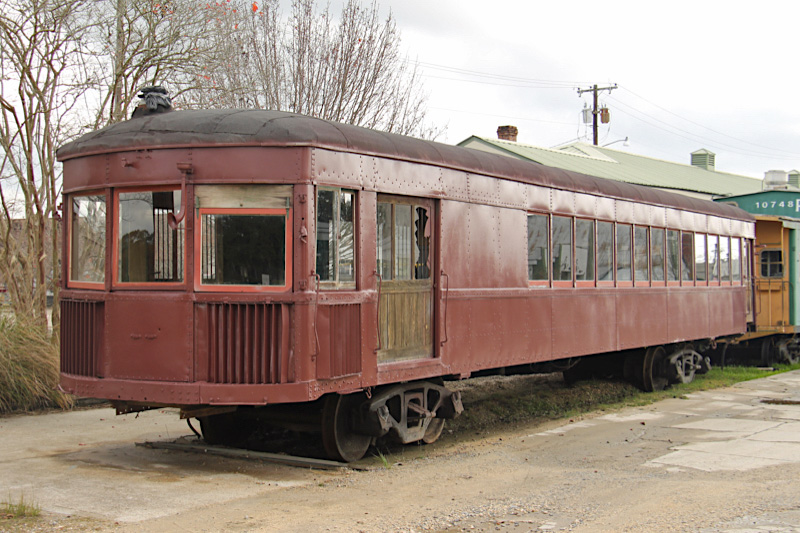
Columbus & Greenville #M-75
Covington, La / Dec 2016 / RWH
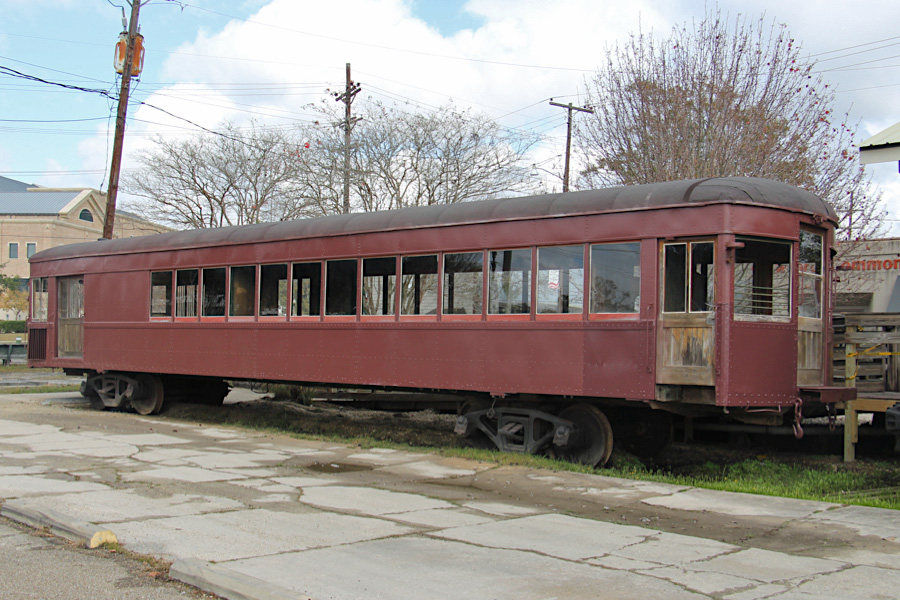
Covington, La / Dec 2016 / RWH
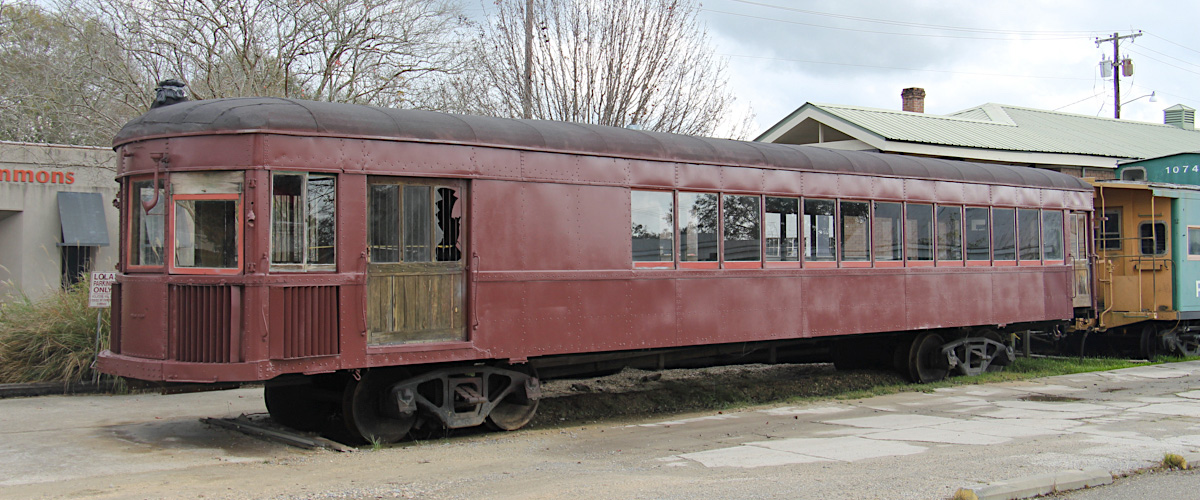
Covington, La / Dec 2016 / RWH

Covington, La / Dec 2016 / RWH
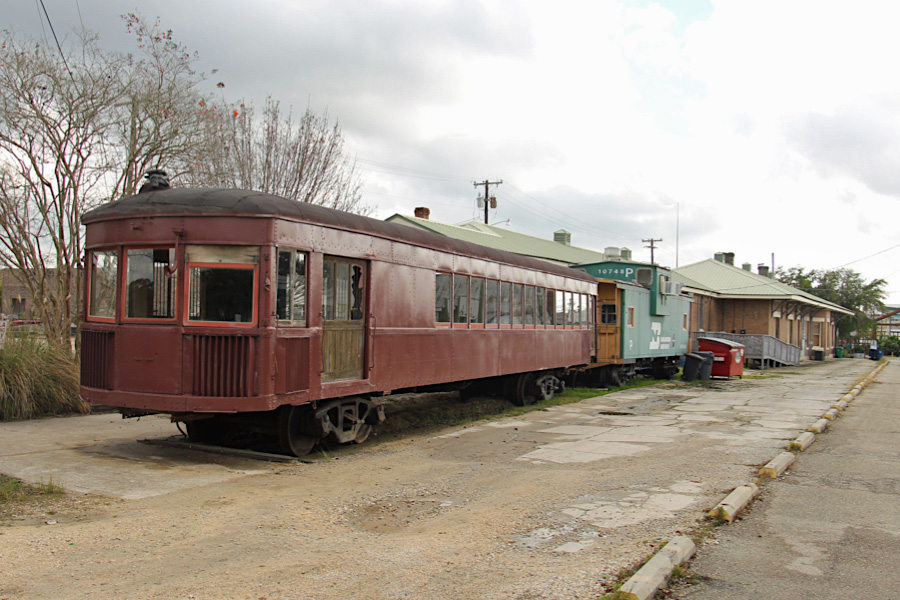
Covington, La / Dec 2016 / RWH

Covington, La / Dec 2016 / RWH

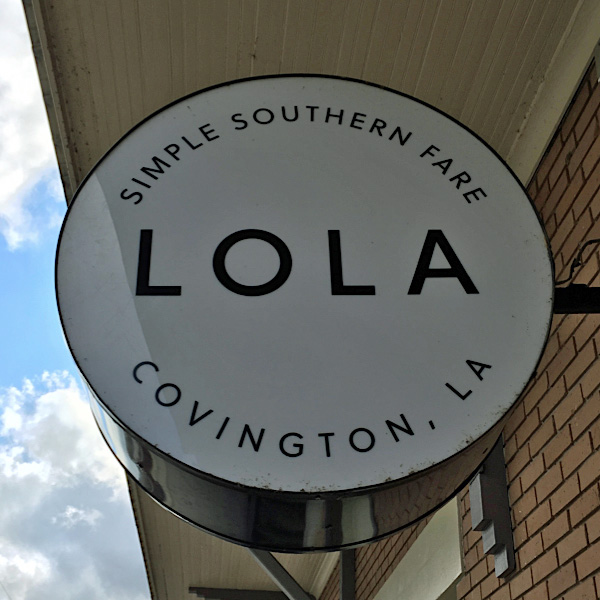 What's not to love about the restaurant Lola?
What's not to love about the restaurant Lola?
First, they occupy the former Gulf, Mobile & Northern depot in my hometown of Covington, Louisiana. They also serve southern dishes. Win. And they happen to bear the name of my favorite pet, sadly now departed. And — surely this is the pièce de résistance — they are now the proud owners of a Brill "doodlebug" once owned by our beloved Columbus & Greenville ... and a rare gas-mechanical doodlebug, no less. Later Louisiana & North West ownership is a nice badge of honor, too.
Who would have imagined such a specimen would find a home on the house track of the depot in my hometown. During a Christmas visit with my family in 2016, I was able to snap some photos of the car. Clearly work was underway to stabilize the exterior in preparation for a complete renovation needed on the inside. Of course the stand-in freight car trucks are all wrong ... but who is complaining. Beats the scrapyard, any day. Given how many of her detail parts are long gone, what a treat that the unusual front-mounted, inverted horn survived all those years and two different southern shortlines. The Delta Route's smallest bug will make for some quaint eating space when at last they have her all dressed up for the party.
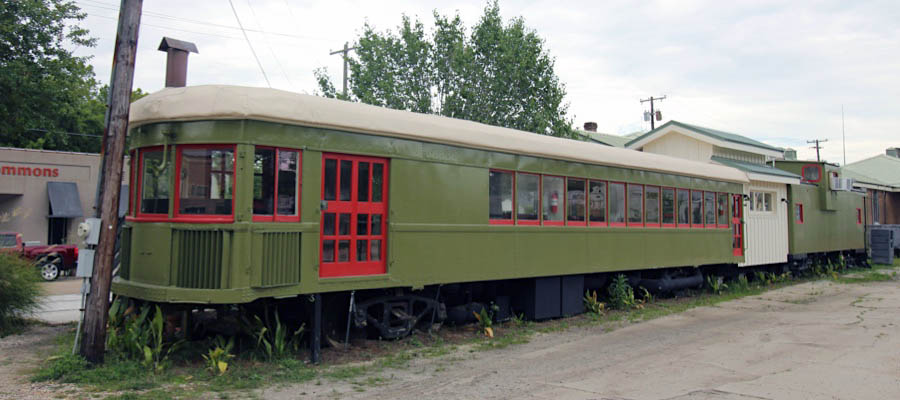
Covington, La / Jul 2019 / RWH
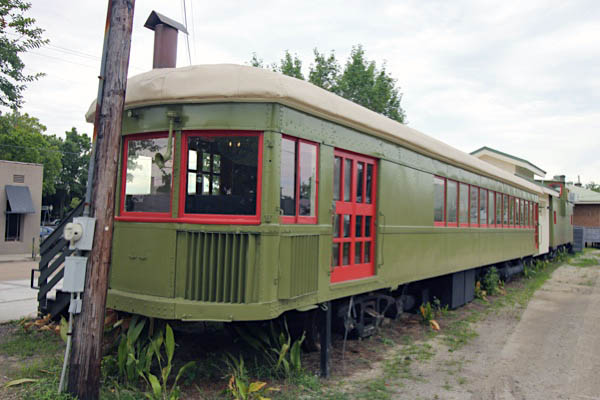
Covington, La / Jul 2019 / RWH
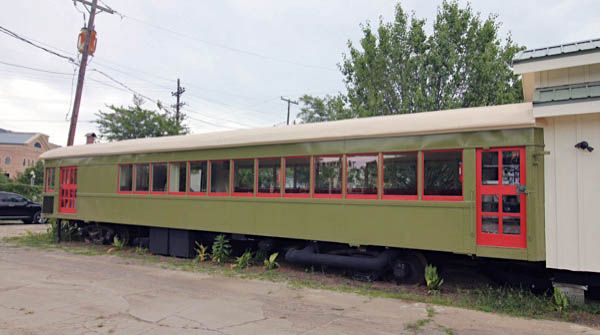
Covington, La / Jul 2019 / RWH
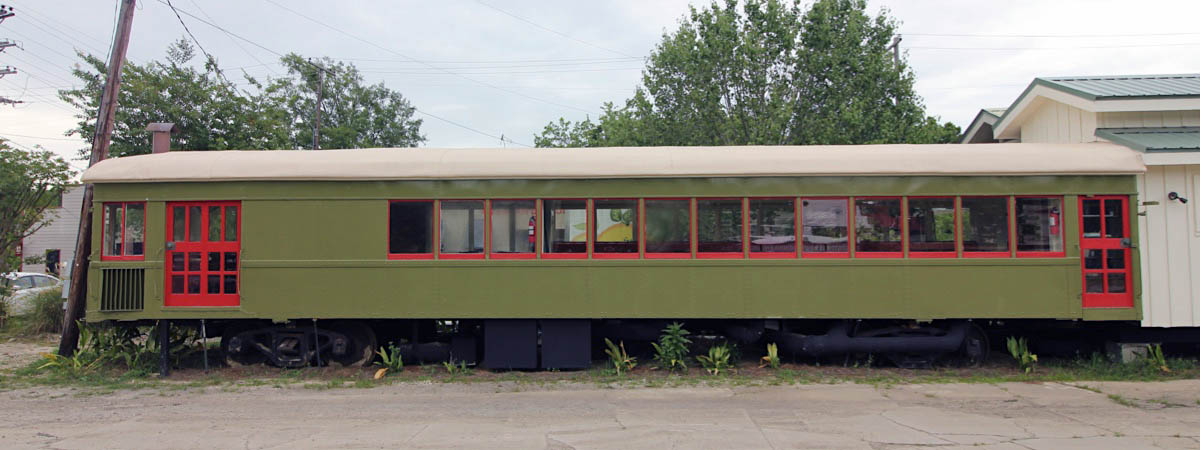
Covington, La / Jul 2019 / RWH


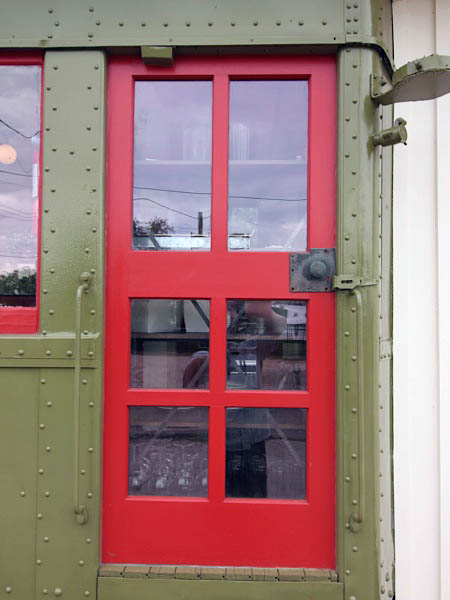
Jul 2019 / RWH
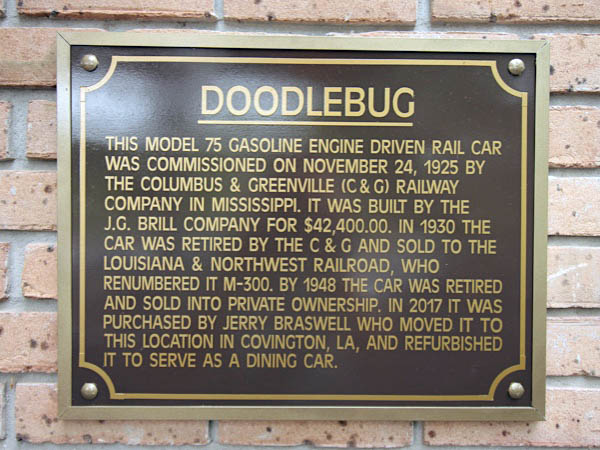
Jul 2019 / RWH
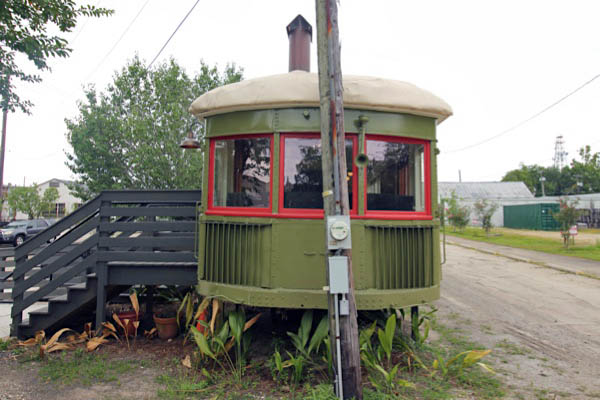
Covington, La / Jul 2019 / RWH

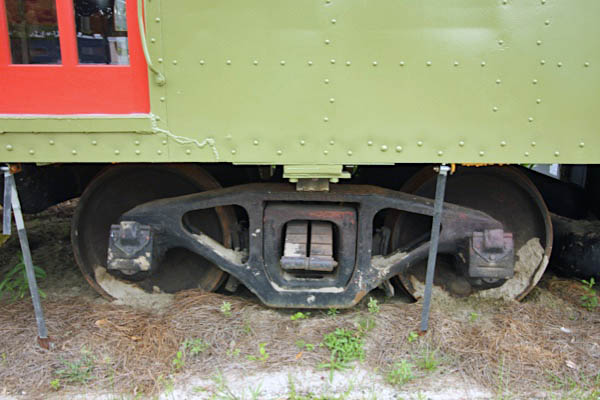
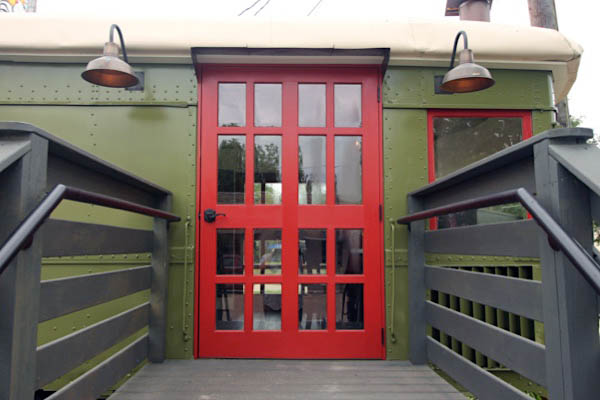
Jul 2019 / RWH
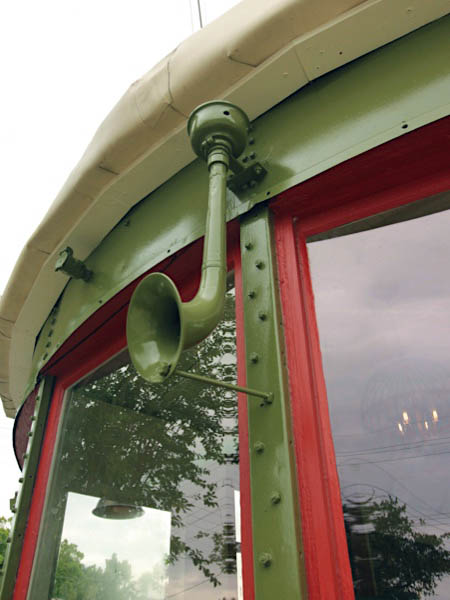
Jul 2019 / RWH
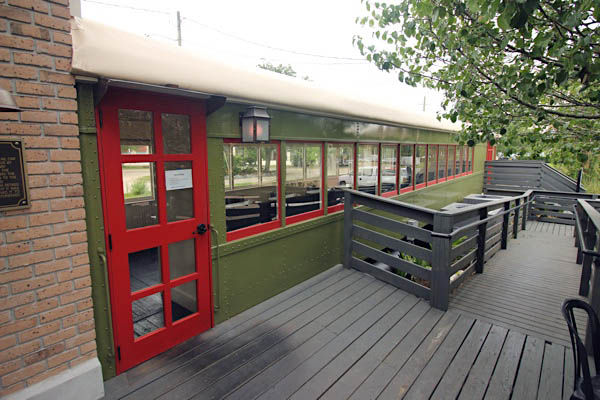
Covington, La / Jul 2019 / RWH
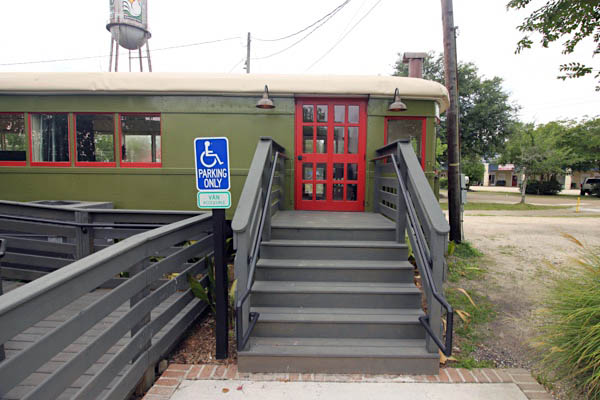
Covington, La / Jul 2019 / RWH
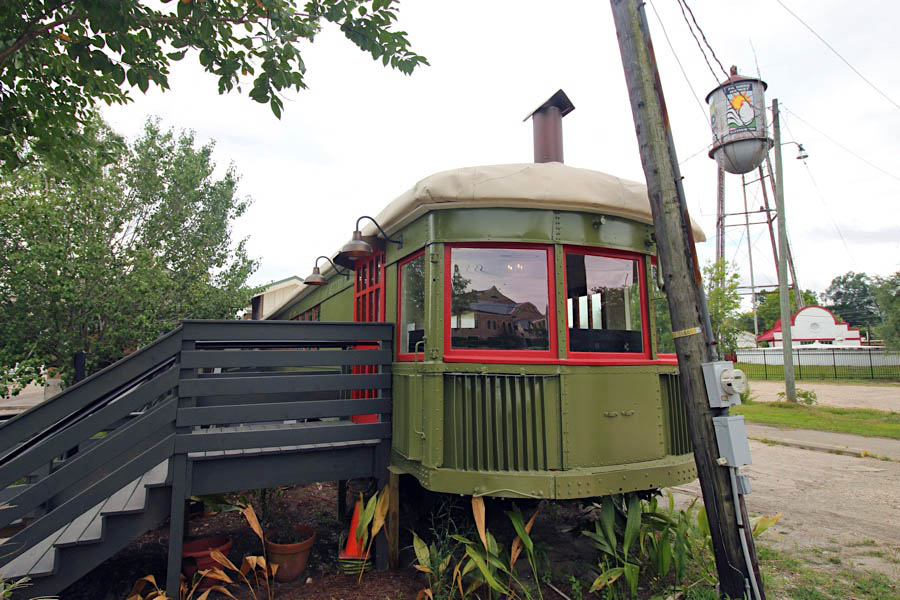
Covington, La / Jul 2019 / RWH
Modeling
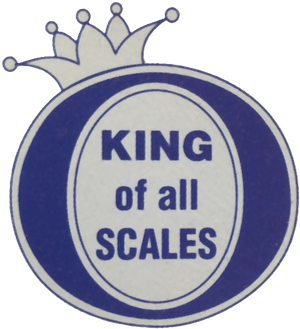

Columbus & Greenville #M76
Walthers O Scale motorcar kit / Huntsville, Al / 1970 / JCH model
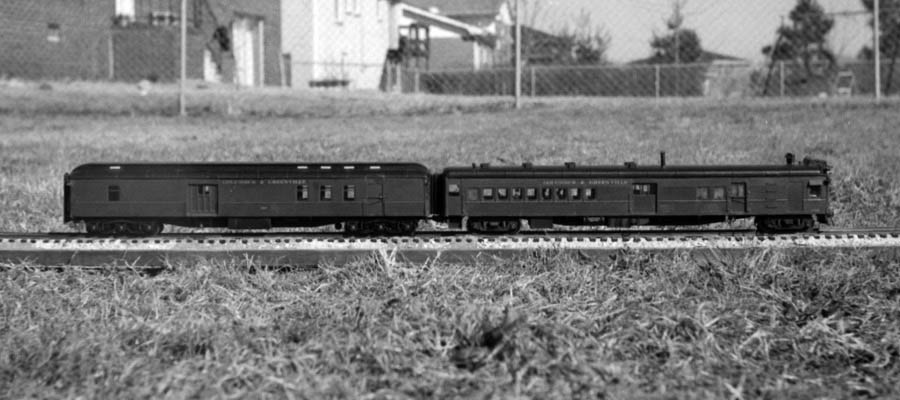
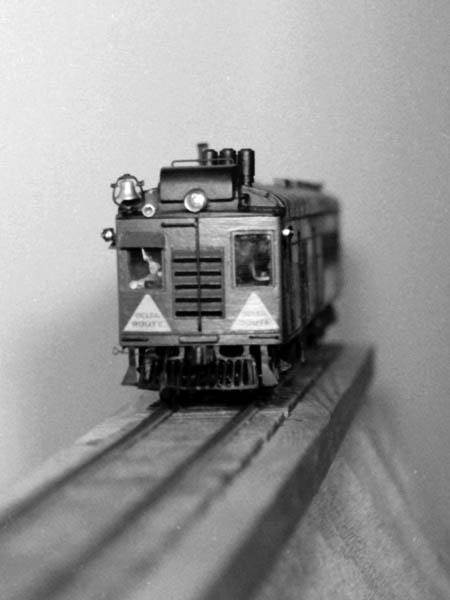
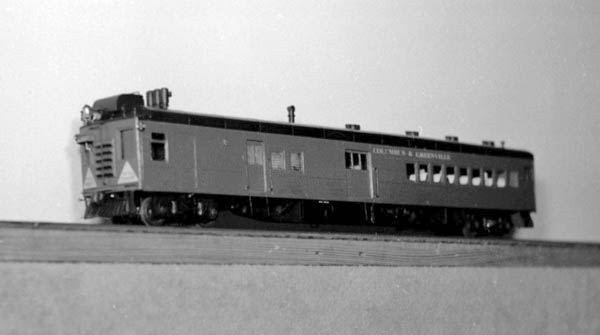

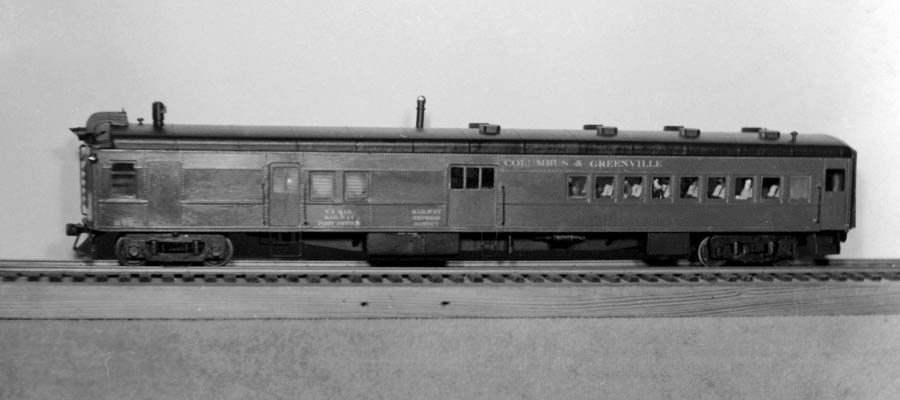
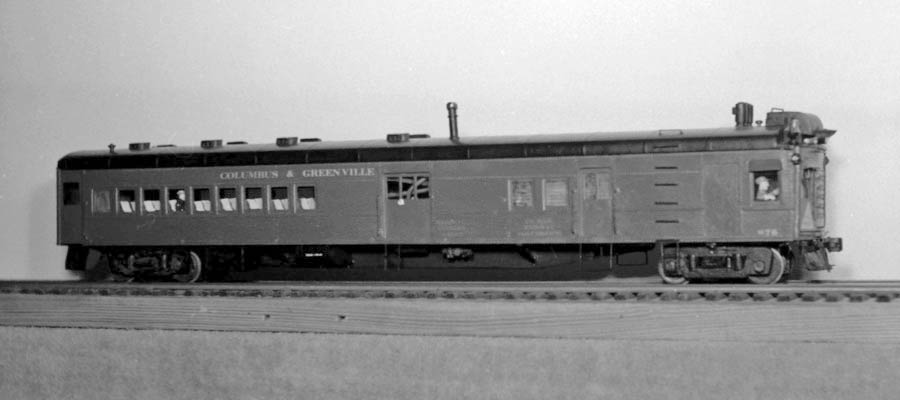

See also our Columbus & Greenville O Scale Modeling scrapbook
Links / Sources
- Louis R. Saillard, Delta Route: A History of the Columbus & Greenville Railway (1981)
- Debra Brill, History of the J. G. Brill Company (2001 Indiana Univ Press) 155-6

 All time Columbus & Greenville motorcar and trailer roster
All time Columbus & Greenville motorcar and trailer roster

